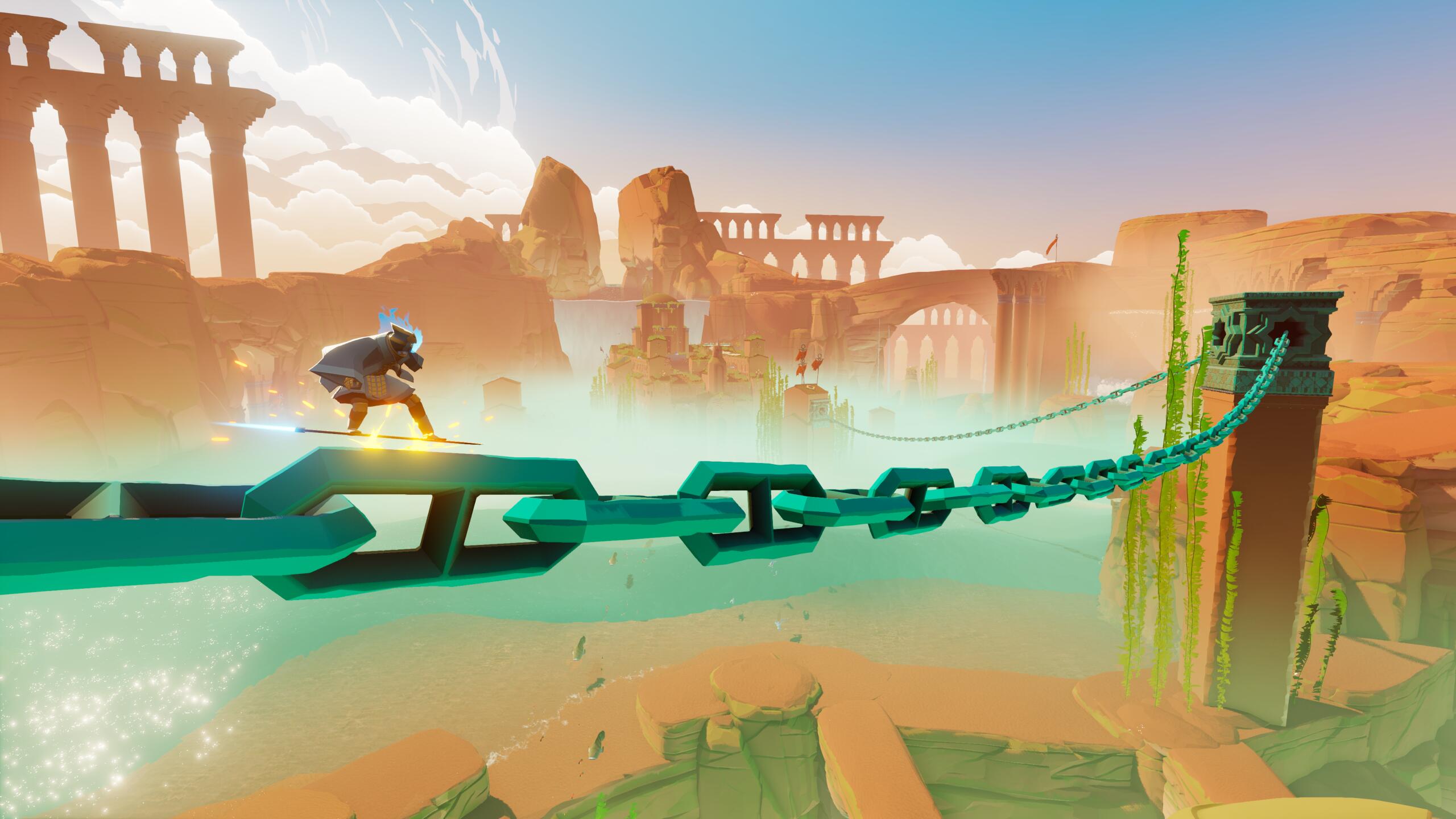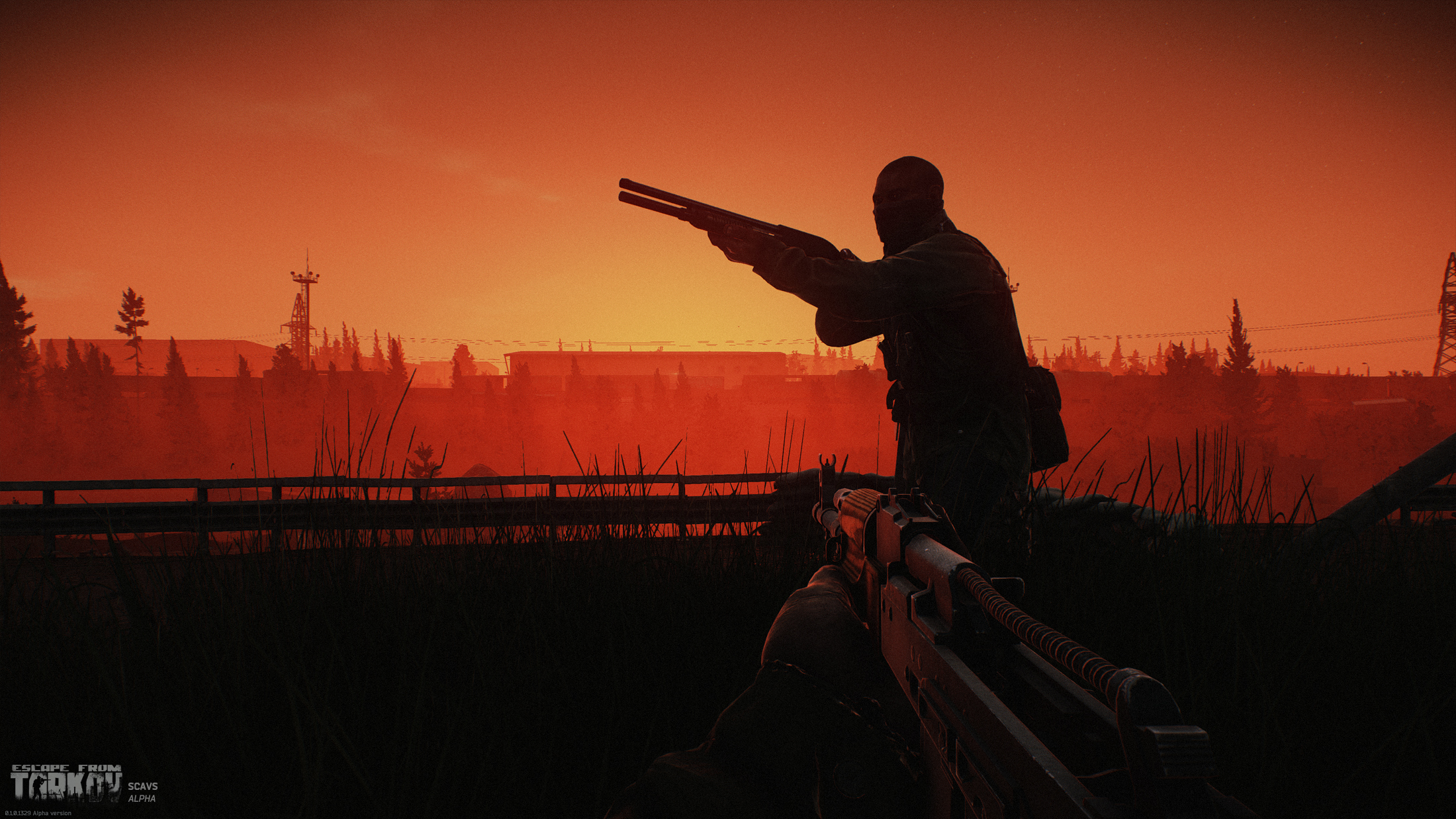GamesRadar+ Verdict
There are a few bumps along the road, but overall, Sword of the Sea is an effortless ride. The majesty of Journey, the action of The Pathless, and the tranquillity of Abzu are all present here. Sword of the Sea’s release marks the end of a four-game odyssey that started in 2012 and has reached a simultaneously exhilarating and meditative crescendo.
Pros
- +
Surfing feels simultaneously thrilling and relaxing
- +
An evocative story that is self-contained but also bridges together other Giant Squid games
- +
Visuals and music so rich it’s impossible not to get swept up in the moment
Cons
- -
Some action-based sequences interrupt the game's overall flow
- -
Controlling sea creatures can be a bit clunky
Why you can trust GamesRadar+
For some, Sword of the Sea will feel familiar. An unnamed protagonist is tasked with cleansing a bygone realm by restoring mythical landmarks to defeat an ancient evil. It's a story that creative director Matt Nava has been telling for over a decade, from indie royalty Journey back in 2012 for Thatgamecompany to 2016's aquatic adventure Abzu and 2020's airborne adventure The Pathless under Giant Squid Studios.
It may seem like a fourth retelling, but Sword of the Sea isn't simply a reproduction, it's a bridge. The majesty of Journey, the action of The Pathless, the tranquillity of Abzu – Sword of the Sea connects them all, the four sharing not only a bold artistic vision but, surprisingly, a shared overarching story too. The result not only reinforces Giant Squid's reputation for creating artful, evocative games that celebrate the joys of fluid movement, but also manages to unite a decade's worth of storytelling into a complete whole.
Playing as a mysterious entity (A soldier? A spirit? Both? Neither?), you need to use your hoversword to explore the remains of a lost culture buried beneath a vast desert and restore a lost ocean to this desolate world by transforming sandy runes to rolling waves.
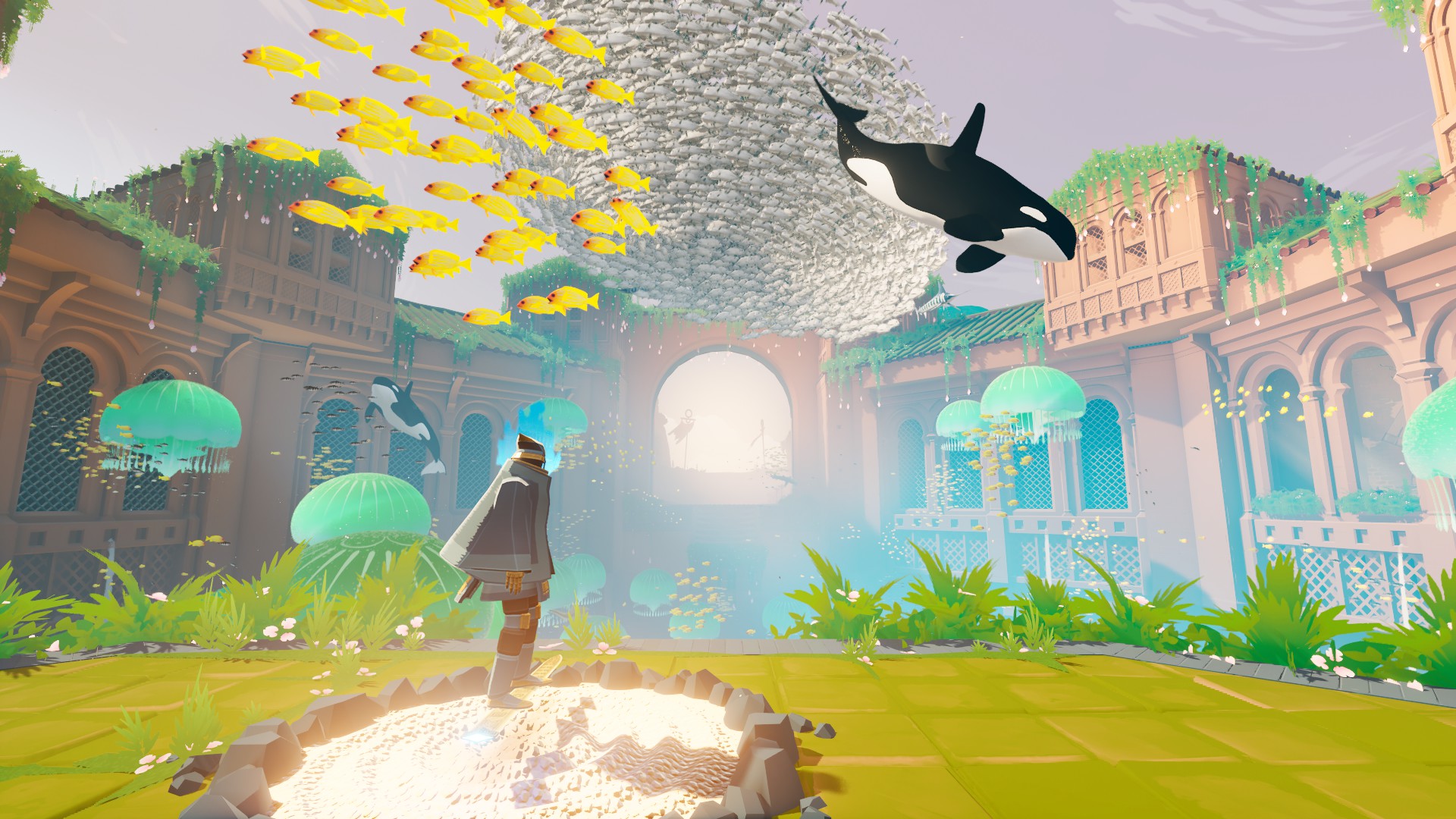
Release date: August 19, 2025
Platform(s): PC, PS5
Developer: In-house
Publisher: Giant Squid
Taking notes from skating games and the studio's back catalog, the hoversword – which moves like a snowboard, skateboard, and surfboard all in one – feels like an absolute dream. Minimal inputs see you gliding, soaring, and speeding through environments in a way that a comparison to skating games like the Tony Hawk series doesn’t quite fit. You can't really 'be bad' at surfing in Sword of the Sea. There's no face-planting into concrete to kill your vibe. This is a game that wants you to fly.
Even when you're attempting the most ambitious jumps, kick flipping, and spinning as you launch yourself off ramps and cut through waves, your clunky inputs will always transform into the most elegant outputs due to the game's forgiving system. You glide straight through objects in the environment that would usually yeet you clean off your board. Your character is subtly nudged left or right, letting you successfully pull off your landings. The game's active camera constantly positions itself to give you the best view of the path ahead.
Sword of the Sea even understands the cadence of scenes, moment to moment – boosting you through dazzling water planes and slowing you down when exploring the winding corridors of ruins. The game is forever reacting to your movements in a way that makes the protagonist feel less like a surfer and more like a ballet dancer. There’s an ease and lightness to their movements that's communicated effortlessly through the game’s controls.
Surf's up
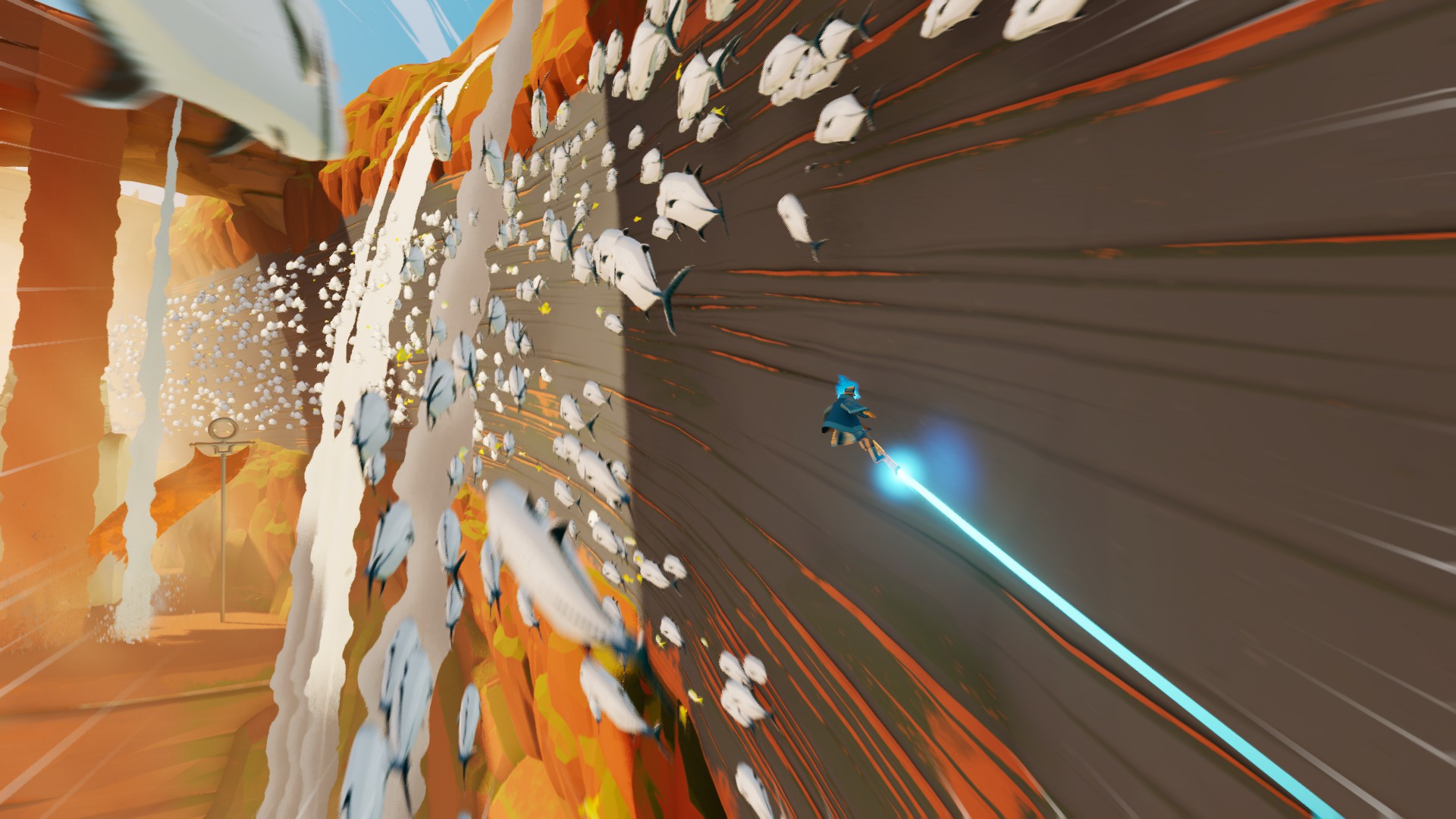
Unusually for Giant Squid, there's a shaman-like shopkeeper who will let you exchange your collected currency to buy tricks. These more game-y elements feel a little out of place, but they work wonders for replayability. With a total time of 2-3 hours to complete the main story, I spent another 2 hours unlocking these new abilities as well as poking around the environments on the hunt for collectibles. It’s nice to have a reason to return to areas in a game where you can often get swept away with the momentum and speed through levels.
Weekly digests, tales from the communities you love, and more
Similar to its predecessors, Sword of the Sea is structured into chapters, each one with a unique area. To progress, you’ll need to press buttons, activate ancient mechanisms, and scale structures to open the doors to the next area. It’s formulaic, but together with different biomes in each chapter and cinematic moments that punctuate the story, it doesn’t feel too repetitive.
It also helps that it’s visually incredibly impressive. Dunes roll and wave like they’re liquid gold. Sand, sea, snow, slate – they’re silky and sleek as our surfer glides effortlessly across them. As you activate runes and replenish the world’s water, these moments are accompanied by bursts of fish, hundreds of them, swimming through the air like they have wings. The boundaries between what is air, water, and land are totally blurred. It’s dazzling.
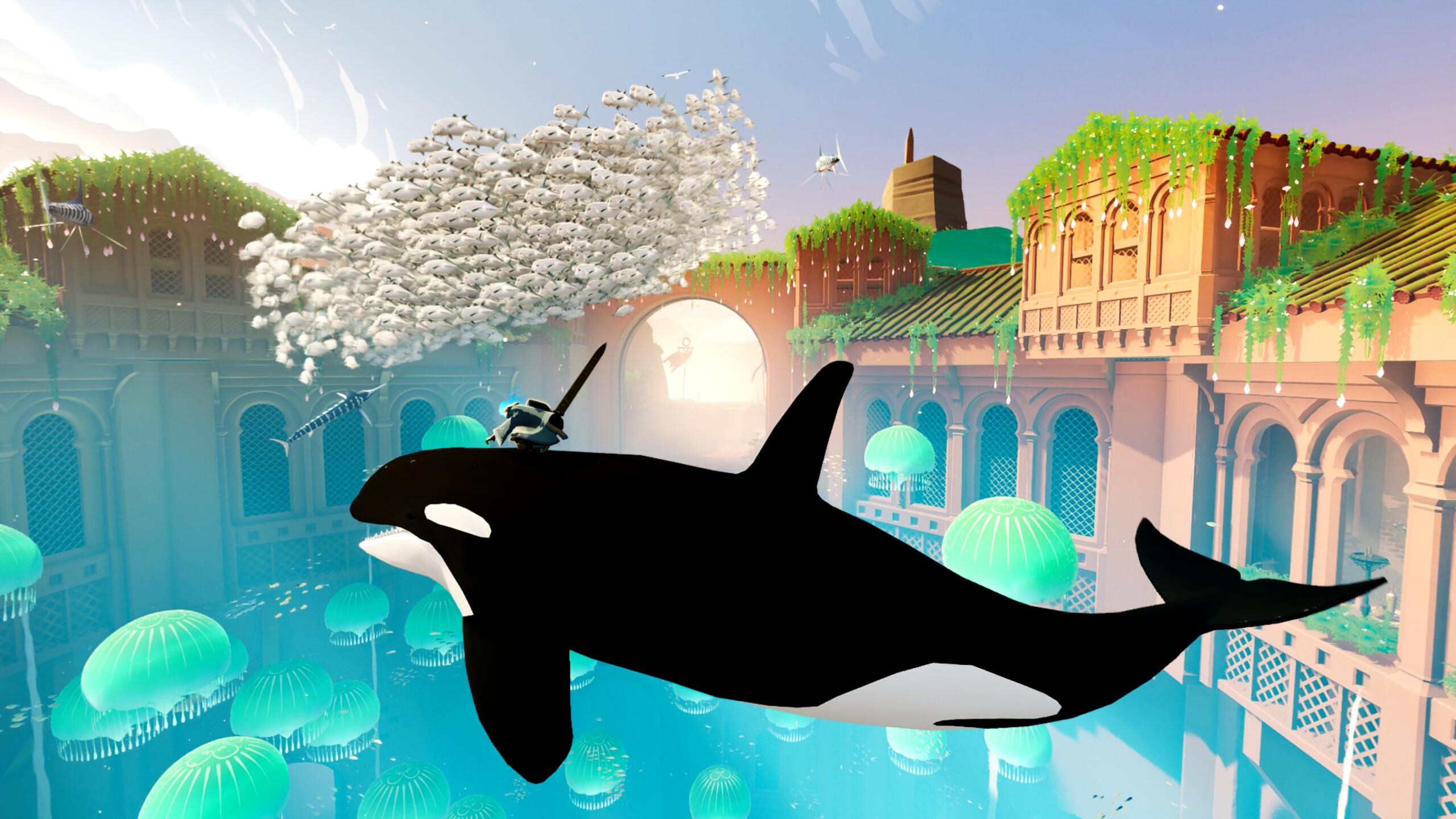
However, there are some bumps on the road. In between the game’s more meditative moments are action-based sequences, including two areas where your character jumps on the backs of giant sea creatures and lets you control them (using the same inputs as the hoverboard). These creatures are super-sized, meaning that everything is scaled up, and so with that bigger scope comes a lack of control, interrupting the game’s usual seamless flow.
Although riding a giant shark like a surfboard is one of the coolest things I've done in video games in a hot minute, it feels incredibly clunky, especially compared to the buttery smoothness of the surfer on their board. I appreciate the role these sequences have in the overall story (they also add a wonderful sense of drama and spectacle), but unfortunately, they don’t quite land. But hey, it bears repeating, you ride a giant shark and control them like a surfboard, so there's that.
Ride the wave
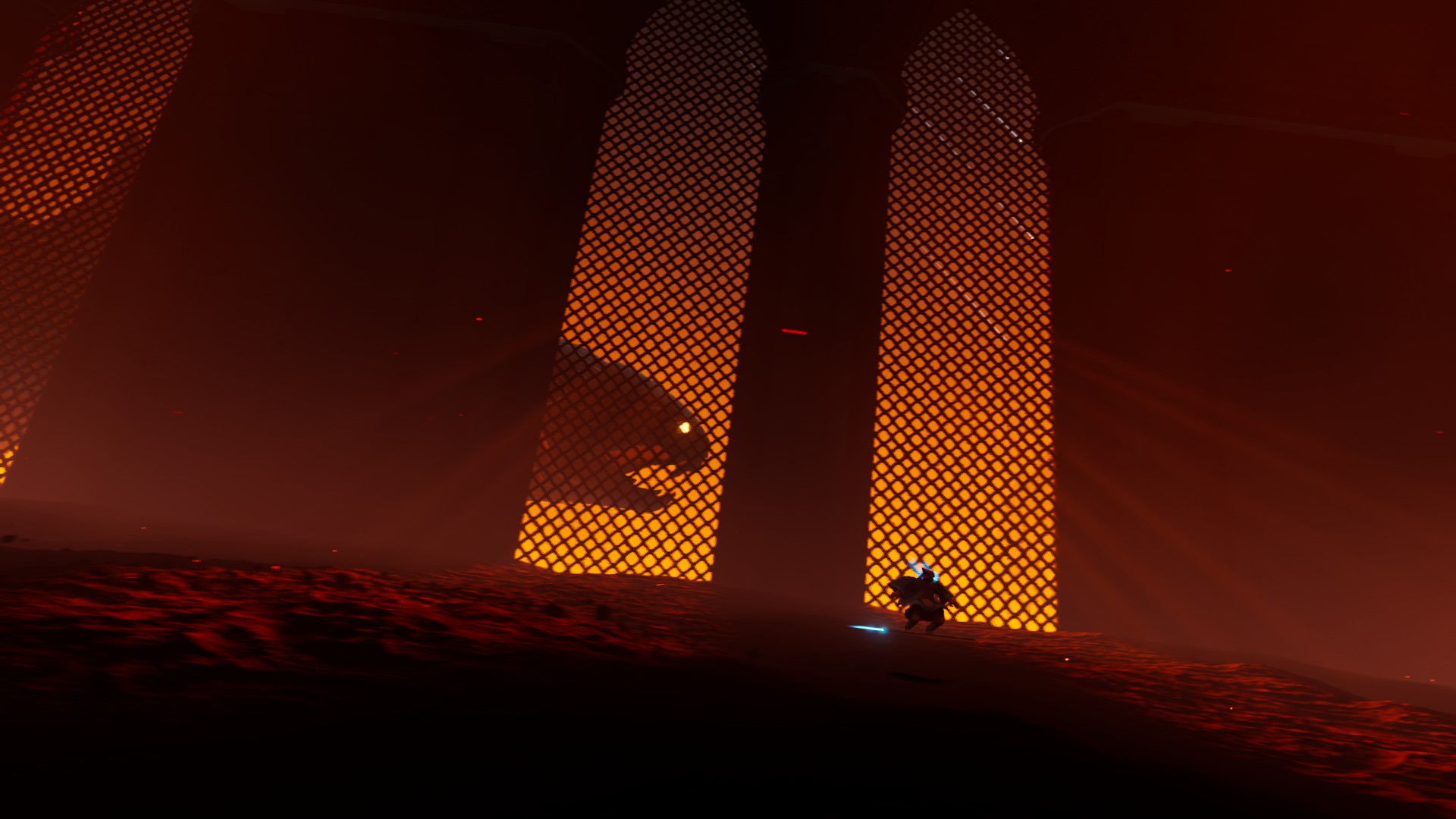
The boundaries between what is air, water, and land are totally blurred.
Even in these clunkier moments, Sword of the Sea continues to be visually impressive. Video game composer and music wizard Austin Wintory has composed a soundtrack so evocative and rich that I can’t help but be swept away in the game’s more emotional moments, and in a game that (for the most part) uses zero text or dialogue to tell its story, that's impressive.
Sword of the Sea's narrative is mostly told through murals, text found on dusty shrines, and environmental clues, all storytelling staples for Giant Squid. These story beats make connections to the studio’s other games more concrete, and range from small, subtle environmental clues to something as bold as a returning character. However, outside of that, Sword of the Sea still tells a self-contained tale.
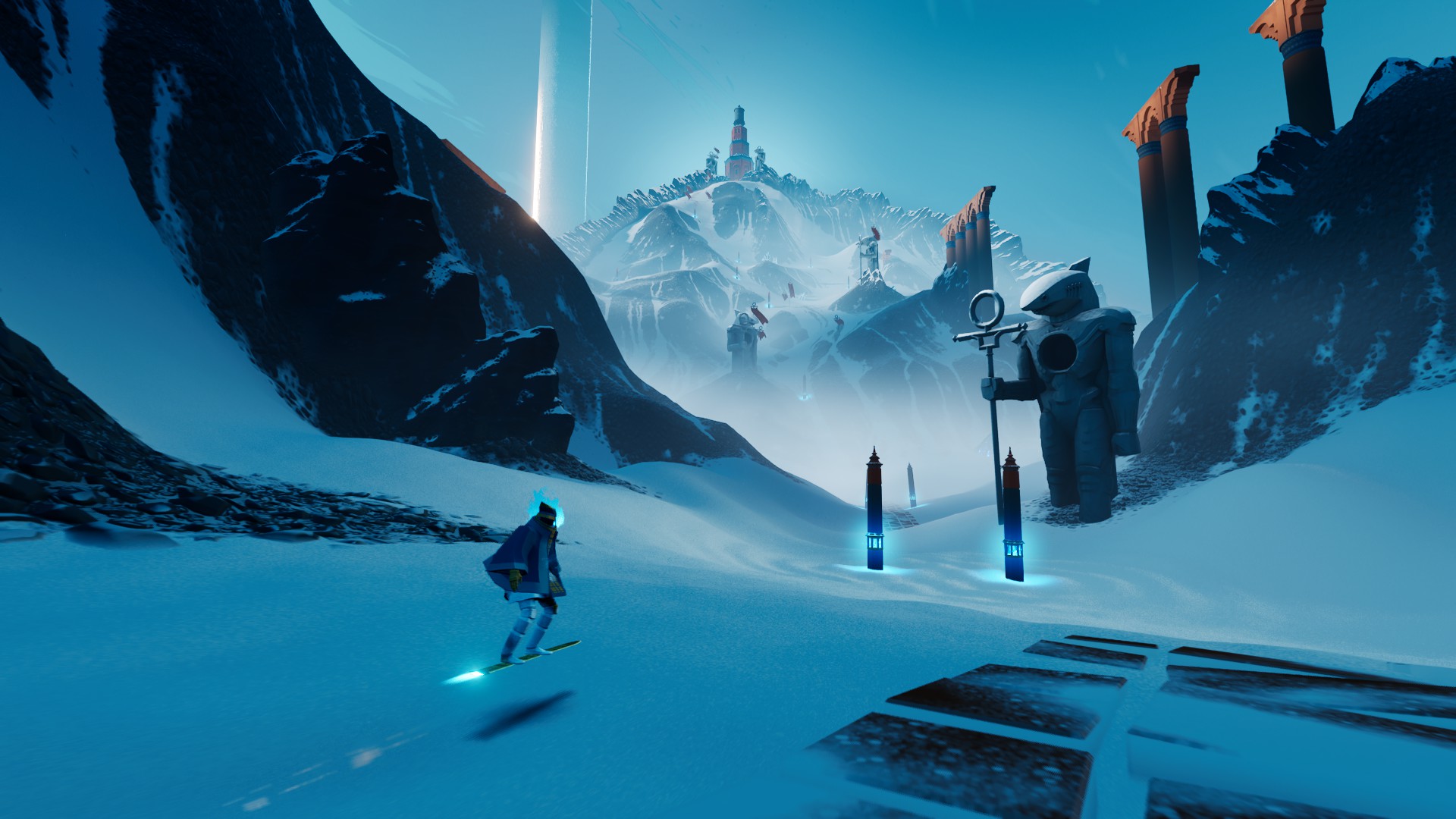
It follows its predecessors in that you’re still restoring life to a desolate place and overcoming the game’s ‘big bad', but it’s told in a much more dynamic way. Action sequences, dramatic cinematic moments, giant set pieces – they're more punchy than interpretive murals and text. The game ends on a soaring high note – the music swells, the camera sweeps, your character speeds through scenes – it’s impossible not to get caught up in the moment.
Sword of the Sea feels at home with the awe, spectacle, and beauty that's defined its predecessors – Journey, The Pathless, and Abzu – over the years. Together, they're a four-game odyssey that now, more than a decade later, has reached a crescendo. It may flounder in some moments, but overall, Sword of the Sea is a cascade of cinematic moments, complete with a movement system that's both a meditative balm and a jolt of adrenaline. Playing Sword of the Sea is like climbing a mountain and looking back: exhilarating, reflective, and a reminder of how far you've come
Sword of the Sea was reviewed on PC, with a code provided by the publisher.
We also loved Giant Squid's last game. In our The Pathless review, we called it "equal parts calming and arresting".

Rachel Watts is the former reviews editor for Rock Paper Shotgun, and in another life was a staff writer for Future publications like PC Gamer and Play magazine. She is now working as a freelance journalist, contributing features and reviews to GamesRadar+.
You must confirm your public display name before commenting
Please logout and then login again, you will then be prompted to enter your display name.
